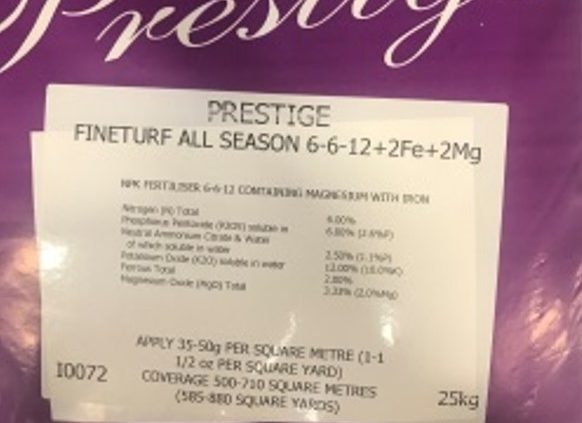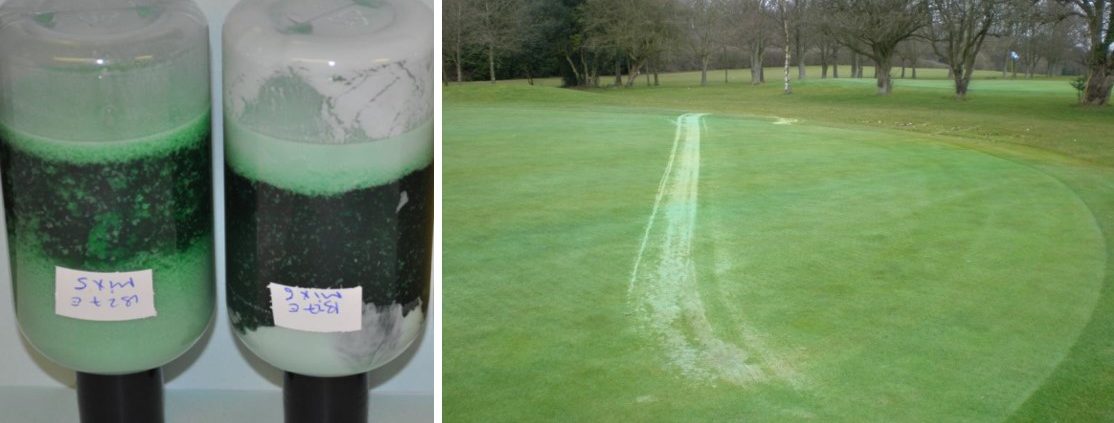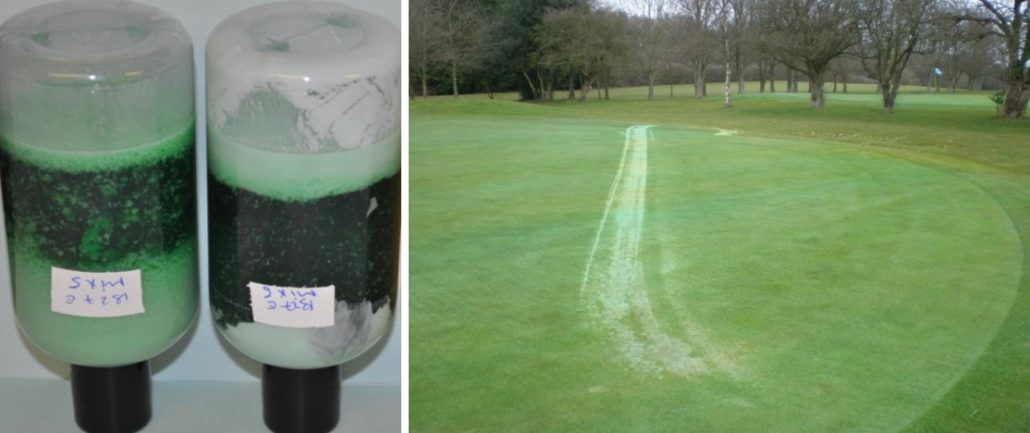From Homeless To Award-Winning Greenkeeper: Jack Percival spent six months on the streets. When greenkeeping provided a lifeline, he never forgot what he had been through.
Of all the things Jack Percival no longer takes for granted – and it’s quite a list – there is one that stands out, that’s hardwired into his brain like a bad memory. Warmth.

The thought of its loss makes him shudder, conjuring flickers of frozen nights spent lodged into the crevice of a fire escape in a Tesco car park.
Sometimes he could call on a friend and get something to eat, or to find a couple of hours to sleep or wash his clothes.
But whether he got a bed for the night or had to huddle on the frigid tarmac could depend on the knock of a door.
The hum of the greens mower reminds him his situation is now a world away from what it once was.
Sometimes he might ask himself why he’s out on the golf course at all hours – carrying out a bit of watering – or reading up on a new product at home.
He’s spent the last 18 months as the deputy course manager at Chipstead and the 24-year-old loves it. It’s a way of life he could not have countenanced when he was homeless.
“I always say that it isn’t just a job, it’s a passion,” he says. “It’s not just 9 to 5 and it’s definitely a job where you need that passion.
“To drive round and see the course in good condition makes you smile because you know you are doing something well. It’s job satisfaction.”
But if he stands and catches a breath, Jack might consider how remarkable this turnaround has been – from a life of desperation to one of hope and positivity.
Jack admits he was a difficult teenager. A problem for his mum, he “wasn’t the greatest of kids to be around”. Falling into the proverbial ‘bad crowd’ he found himself on the Croydon streets.
It was a six-month spell of sofa surfing and rough sleeping. His friends helped where they could but it was only so long before he was outstaying his welcome.
They had their own lives, their own worries, their own bills to pay.
“There was a guy I met and he was a local alcoholic,” he says, remembering some of the alternative ways he’d try to get out of the cold.
“He had a house but he was a really bad drinker. He was a nice guy but had just fallen into it.
“I used to stay at his house when I could. He’d drink a lot during the daytime and sometimes he’d just come home, be paralytic drunk, and sleep on the sofa.
“Sometimes I could go there and he’d answer the door and sometimes I’d go and he wouldn’t. By that time it was 10pm and I’d be stuck for choices.”
So his fate would be a fire escape and even that proved no sanctuary. When the shoppers started arriving in earnest, Jack was on the move – wandering the streets and a nearby country park.
He never begged, trusting he’d find enough to keep him going. Even so, the effect on his health was gradually devastating.
“I really struggled. In the end, my skin was covered in psoriasis because I was so stressed, down and upset. I was covered in scabs all over my body. It was a tough time. It was horrible. I wouldn’t wish it on my worst enemy.”
Had a family friend not come to his rescue, Jack can’t think about where he might be now. Karen took him in, “gave me a kick up the arse”, and issued a sort-your-life-out warning.
She got him a job, doing groundwork at a cemetery, and he found a spot in a little house share.
Soon after, he met his girlfriend, Tori, and his growing interest in agronomy saw him land a job as a greenkeeper at Purley Downs.
He was 18 and had purpose.
He moved to Addington Palace as a mechanic greenkeeper and served as the head greenkeeper at a 9-hole course in Forest Hill, South London, before taking the job at Chipstead.
Everything turned out rosy for Jack. With a four-year-old son and another baby on the way in May, he’s turned his life around in impressive fashion. It’s a feelgood story for anyone who loves a fairytale.
And yet it doesn’t end there. Because living on the streets left a scar – and the kindness shown to help him back on his feet compelled him to take action.
It started with sandwiches. If he saw a homeless person, Jack would stop and get them something to eat, or something to drink.
Then a couple of years ago, on Christmas Eve, he got on the bus to Croydon laden with sandwiches and bottles of water and gave them out to those he found.
“I just kept it quiet,” he says. “Only my family knew about that. I’d come home and we wouldn’t really speak about it again. It was something that was done.
“I used to call Karen my foster mum. Unfortunately, she died in March last year. She always taught me that no matter what you’ve done everyone deserves a second chance.
“Whether you are a drug addict or an alcoholic, you still deserve to eat food and have clothes on your back.”
So last summer, he started working for Croydon Nightwatch on a Sunday evening and as Christmas approached, and he planned his annual sandwich run, those in the know urged him to try and do something bigger.
Jack erred. He didn’t want to get on social media to ring the bell fearing he’d be branded as hunting for likes and congratulations. This wasn’t about that.
But he also knew if he could get some weight behind the project, and get some helpers on board, he might be able to do something big.
He gave into his fear, and something amazing started happening.
“It ended up going through the roof. I was getting carloads of donations turning up at my door. Suppliers were buying everything I needed.
“In the end I had to put it all in a storage facility. Every couple of days I had to get a van to the house, fill it up with donations, and go and put it into storage because my house was getting too packed.
“I had barbers come forward. The tea and coffee van that I visit in the morning said she would supply all the coffees for free. I had the owner of a pizza shop message me and then a curry shop also came on board.”
The scale of the donations was breathtaking – stacks upon stacks of packs of biscuits, bottles of water, cans of drink, toothbrushes, deodorant, chocolate bars, and more.
From a walk around on a festive evening, Jack now had an event on his hands that required military planning.
Every night for about two months he’d sit on his phone working out logistics, sharing WhatsApp messages with volunteers and organising licences.
But even he couldn’t have imagined the impact his efforts would have.
There is something pernicious about the way our society views the homeless. We avert our gaze in the face of a plea for help. We imagine the worst about those in a desperate plight.
They are there because it’s their fault, we tell ourselves. It’s because they are drug addicts, because they are alcoholics, or because they are feckless.
The milk of human kindness runs sour. Those who are homeless can face the worst of us – and largely expect nothing else.
So when someone does something to break that chain, as Jack did when he galvanised a community to support the Croydon homeless, the response is enough to melt even the hardest of hearts.
“One guy had a haircut and started crying,” he remembers. “There was an old Jamaican guy who came and he was looking for new pair of shoes – he had holes in his.
“We found him this pair of boots and he was dancing on the spot with happiness. We ended up taking him back to his tent and piled him up with sleeping bags and clothes.”
Jack had been struck with last minute jitters. Would anyone turn up? Would it go well? He’d been round the streets telling everyone he could find to come along.
But at first there was only a trickle of people, and then it started to rain. Suddenly there were tables full of produce he thought were going to go to waste.
They were piled high with hygiene bags, snack bags, sleeping bags, hats, hot water bottles, gloves, pants, socks, fruit bars, meal replacement shakes, chocolate, a transit van full of clothes to rummage through. It was everything you might possibly need if you had to get through another frozen night.
His team of volunteers took some of the supplies and wandered through the streets. Then people started arriving in their droves.
“It was basic needs,” Jack says. “We even catered for dogs and gave out little doggie bags and biscuits. One lady just couldn’t believe it. She said, ‘The dog’s going to get fed, I’m going to get fed. It’s unbelievable.’
“People were asking if they could have an extra cup of coffee. They were really hesitant. I said, ‘It’s here, you can help yourself, take as much as you want.’
“It was the face on a young lad that got a haircut – that was the thing that got me. He was quite cocky, he obviously had a small addiction or something like that, and at first he didn’t really want the help.
“I sat him down and said, ‘Come on mate. You can pick anything you want. We can help you out. What about a haircut?’ He said, ‘A haircut, you are joking?’
“But he had one, was sitting there and bonding with the guy cutting his hair and they were having a good chat for half an hour. We were bringing him a cup of coffee and a pizza. In the end, he was ecstatic and loving it.”
Jack looked nervous, and sounded it too. We were inside the massive convention centre at Harrogate and, in a couple of hours, he was up for a big award.
It was a month after his Christmas feed on December 23, but news of what he had done spread quickly.
His team had helped about 75 people in all – feeding and clothing them – and those selfless efforts had earned him a nomination at the annual BIGGA Awards.
Organising and preparing that was one thing, standing up in front of a room of his peers was quite another.
And yet they were the ones to stand for him – in their hundreds as he received an ovation that moved him to tears when hailed for the Outstanding Contribution of the Year.
“When I heard Jack’s story I was absolutely blown away,” explains BIGGA’s chief executive Jim Croxton. “Having heard what he went through during those six months when he lived on the street and seeing how he has worked tirelessly in the years since to not only turn his life around but also provide opportunities for other less fortunate, is quite inspirational.
“I’m delighted that we have been able to recognise Jack’s achievements in this small way. He is an incredible young man and I’m proud to call him a member of the association.”
Jack didn’t know what to say. A week later, with a phone bulging with congratulations from well wishers, he was still at a loss.
“I guess it’s an achievement,” he says. I’ve asked Jack where greenkeeping fits into his past and where his life is now.
“I call this job a ladder and it’s one that everyone is trying to climb. I have been around a bit but when I move on I make sure I leave on good terms and, while I was there, I work my nuts off so it stands out.
“People look back and say, ‘That Jack’s a really good kid. He works really hard.’ It stands out and it goes a long way.”
If everyone didn’t already think that of him, what is coming next would only cement their opinion. Planning for a summer feed is under way.
Tori had shared a Facebook post about his winter campaign and it had received around 3,000 likes.
Most were positive but there was the odd one – there’s always the odd one – who asked the question. ‘What happens for the other 364 days of the year? What are you doing to help them then?’
That could have stung – after all the social trolls were one of Jack’s worries when he debated whether, and how, he could take his idea bigger.
But how large it now becomes is only limited by the scale of his ambition. That’s the ultimate rebuttal to those who lack faith.
“I set a New Year’s resolution this year and it was to give back more, to change someone’s life and to make an impact on someone’s life – even if it is just bringing happiness.
“I feel like I am doing that.”
Click here to read the original article
For the latest industry news visit turfmatters.co.uk/news
Get all of the big headlines, pictures, opinions and videos on stories that matter to you.
Follow us on Twitter for fun, fresh and engaging content.
You can also find us on Facebook for more of your must-see news, features, videos and pictures from Turf Matters.
















